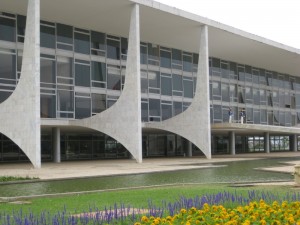Speaking Ill
One should not speak ill of the dead, it is said. Yet in a week fill with encomiums for Dave Brubeck (1920-2012) and Oscar Niemeyer (1907-2012) it is hard to hold back. When I started listening to jazz, in the late 1950s, the Dave Brubeck Quartet was already famous—or at least as famous as jazz musicians got at that time. I loved Paul Desmond, and Joe Morello could do no wrong (I was a drummer), but I never warmed to Brubeck himself. Me and my friends much preferred Ahmad Jamal, Monk, and Bill Evans.
Nor was I ever an admirer of Oscar Niemeyer.




